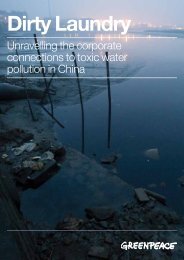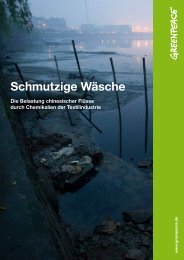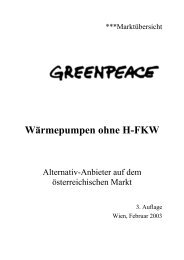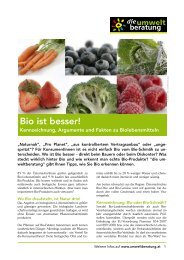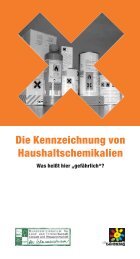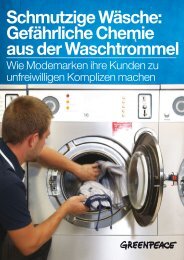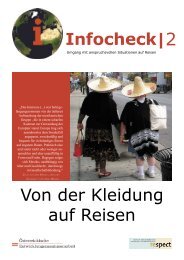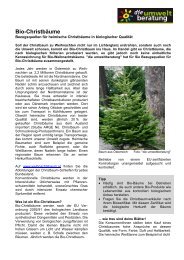Die Schwarze Liste der Pestizide - Greenpeace
Die Schwarze Liste der Pestizide - Greenpeace
Die Schwarze Liste der Pestizide - Greenpeace
Erfolgreiche ePaper selbst erstellen
Machen Sie aus Ihren PDF Publikationen ein blätterbares Flipbook mit unserer einzigartigen Google optimierten e-Paper Software.
<strong>Greenpeace</strong> e.V. – <strong>Die</strong> <strong>Schwarze</strong> <strong>Liste</strong> <strong>der</strong> <strong>Pestizide</strong><br />
evidence of a positive response in a study whose power, design, or conduct limits the ability to draw a confident<br />
conclusion (but does not make the study fatally flawed), but where the carcinogenic potential is strengthened by<br />
other lines of evidence (such as structure-activity relationships); or<br />
a statistically significant increase at one dose only, but no significant response at the other doses and no overall<br />
trend.<br />
Inadequate information to assess carcinogenic potential. This descriptor of the database is appropriate when<br />
available data are judged inadequate for applying one of the other descriptors. Additional studies generally would be<br />
expected to provide further insights. Some examples include:<br />
little or no pertinent information;<br />
conflicting evidence--that is--some studies provide evidence of carcinogenicity but other studies of equal quality<br />
in the same sex and strain are negative. Differing results, that is, positive results in some studies and negative<br />
results in one or more different experimental systems, do not constitute conflicting evidence, as the term is used<br />
here. Depending on the overall weight of evidence, differing results can be consi<strong>der</strong>ed either suggestive evidence<br />
or likely evidence; or<br />
negative results that are not sufficiently robust for the descriptor, “Not Likely to Be Carcinogenic to Humans.”<br />
Not likely to be carcinogenic to humans. This descriptor is appropriate when the available data are consi<strong>der</strong>ed robust<br />
for deciding that there is no basis for human hazard concern. In some instances, there can be positive results in<br />
experimental animals when there is strong, consistent evidence that each mode of action in experimental animals does<br />
not operate in humans. In other cases, there can be convincing evidence in both humans and animals that the agent is<br />
not carcinogenic. The judgment may be based on data such as:<br />
animal evidence that demonstrates lack of carcinogenic effect in both sexes in well-designed and well-<br />
conducted studies in at least two appropriate animal species (in the absence of other animal or human data<br />
suggesting a potential for cancer effects),<br />
convincing and extensive experimental evidence showing that the only carcinogenic effects observed in animals<br />
are not relevant to humans,<br />
convincing evidence that carcinogenic effects are not likely by a particular exposure route (see Section 2.3), or<br />
convincing evidence that carcinogenic effects are not likely below a defined dose range.<br />
A descriptor of “not likely” applies only to the circumstances supported by the data. For example, an agent may be “Not<br />
Likely to Be Carcinogenic” by one route but not necessarily by another. In those cases that have positive animal<br />
experiment(s) but the results are judged to be not relevant to humans, the narrative discusses why the results are not<br />
relevant.<br />
Multiple descriptors. More than one descriptor can be used when an agent's effects differ by dose or exposure route.<br />
For example, an agent may be “Carcinogenic to Humans” by one exposure route but “Not Likely to Be Carcinogenic” by<br />
a route by which it is not absorbed. Also, an agent could be “Likely to Be Carcinogenic” above a specified dose but “Not<br />
Likely to Be Carcinogenic” below that dose because a key event in tumor formation does not occur below that dose.<br />
1999 draft classification<br />
The terms used to describe carcinogenic potential in the July 1999 “Review Draft of the Guidelines for Carcinogen Risk<br />
Assessment” are listed and defined as follows:<br />
Seite 150 von 166




